This article is brought to you in association with Masters of CG, a new competition that offers the chance to work with one of 2000AD's most iconic characters. There are big prizes to be won, so enter today!
It's difficult to imagine now. But 10 years ago, what's become one of the world's biggest TV franchises looked like a very shaky prospect.
Doctor Who had been off the screens for a decade, and become the butt of a thousand jokes about wobbly sets and dodgy special effects. Then in 2004, The Mill was asked to help bring it back, and give it the kind of world-class VFX movie audiences had grown used to.
But hopes for the show were tempered by doubts, reveals Will Cohen, the visual effects producer at the time and currently CEO and executive producer of Milk.
One series only
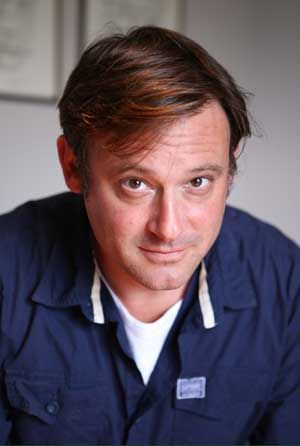
"I thought there'd only be one series, I really did," he admits. "I remember Julie Gardner, who was one of the exec producers at BBC Wales, pointing out two massive issues.
"Could we find an audience on Saturday night for drama? They were really unsure about that. And second, it was a programme that parents remembered but kids didn't know what it was. And things that your parents liked are ordinarily not going to be cool.
"Plus in an era of Harry Potter how are you going to make something with a production value that actually stands up? Because a 12-year-old boy or girl who's watching DVDs and playing XBox with real high-level quality graphics is not going to say: 'That's a TV show, I'm going to forgive the lack of quality of the compositing.' So it all felt very pressured."
In other words, the new series wouldn't just have to look better than the old one; it had to look as good as the best sci-fi cinema and video games. But how to do that on a TV budget?
World-class team
One part of the strategy was to leverage the nostalgia surrounding the show to recruit a world-class team. "We thought, 'We're only going to do this once,' says Cohen. "So we went out to get the best people from movies that we could - people who loved Doctor Who."
They soon realised were pushing against an open door. "There are a lot people who are working in this industry because their imaginations were set alight by this show. So we had a lot of top people going 'Ohh, you're doing Doctor Who? Oh, I just want to be on it!'
"Then we went and got all the tools that you get working in films. The Mill at the time was split between XSI and Maya, and we were like: 'It's got to be Maya people', because we'll have more choice."
Superhuman effort
But it wasn't enough to have the best people and the best software. Without movie-style budgets, the only way to create movie-style effects was for everyone to make a superhuman effort. And that's exactly what happened, says Cohen.
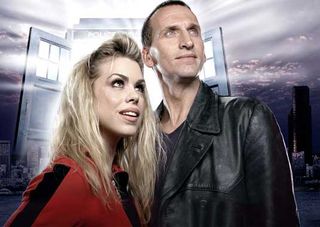
"We blundered our way through it - not really going home, ever," he explains. "We were literally working all the time, all of us. It was a shared responsibility, really, amongst all the senior people. Everyone just pulled together, all the time, to make it happen."
In the process, Cohen believes they created "a genre all of its own". At the time, digital effects were only really being used on British TV in documentaries like Walking with Dinosaurs, he says.
"But that was specially shot for visual effects. And Doctor Who is a drama with visual effects in it. So we were suddenly in a world of pain, with this new Saturday night drama with lots of green screens and effect work, which was like a mini movie every month."
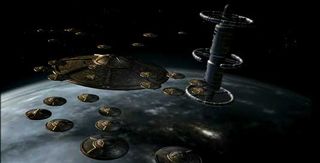
"Maybe the Americans had more experience but we had none in the UK," he adds. "And I'm not sure if there was anything you could compare it to globally at the time. Things like Star Trek: The Next Generation actually have very few visual effects in them.
"So it was an incredible time. And many of the things in terms of tools, techniques, data, systems, are still in place today in some form or another."
Global success
Despite the initial concerns, the new Doctor Who was a huge success, and the team went on to work on seven series, at the same time as doing movie VFX work. In fact, says Cohen, it was a period in which working on the two became increasingly similar.
"More and more, budgets on TV and movies were coming in line with each other. Timelines on movies were getting shorter and shorter, again coming in line with TV," he explains. But while others complained, Cohen felt well prepared. "TV in the mid- to late-2000s put you in really good stead for what seemed to be a trend in movies. Which was getting stuff done as quickly and as well as you can."
And a very good example of this increasing convergence was 2013's 50th anniversary episode of Doctor Who.
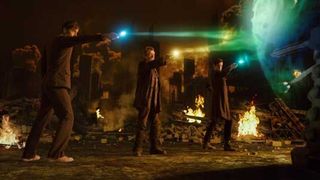
Simulcast around the world to over 100 countries, this special feature-length episode was also to be screened in cinemas worldwide. Not only that, it had to be made in stereoscopic 3D.
Oh, and there was one other thing.
Just four days before the BBC began shooting, The Mill - which had recently been taken over by a private equity firm - announced it was closing its TV department, and Cohen and his team were all out of a job.
The Mill turns to Milk
Rather than go off and get new jobs in other companies, the team decided to stick together and start their own firm. Even though, Cohen admits, it wasn't the best time for it.
"It was an act of complete stupidity starting a business up in the middle of a very difficult two-year period for the industry," Cohen smiles.
"Visual effects in movies had had a very bad press for a good six to nine months. Both Digital Domain and Rhythm and Hues had recently filed for Chapter 11. But we just thought: you know what, let's go for it."
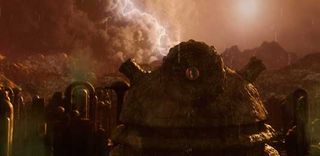
Cohen doesn't remember much of what followed. "It was a bit like that first year of doing Doctor Who - a bit of a blur," he says. "It's actually very hard to start a visual effects studio, especially one that's not just six to 12 people in a basement. It was a very adrenaline-fuelled, alcohol-fuelled, coffee-fuelled time. It was tricky, and difficult and stressful. And it very nearly didn't happen.
"But I think you say to yourself: That's it, this is what we're going to do, we're a tight team. We've all known each other a long time. And somehow we pulled it off."
Epic scenes
As Milk, they had to go through a new procurement process to pitch for the Doctor Who special, even though it had already begun shooting. Then, having passed that hurdle, they managed to up Doctor Who's game once more, with epic, cinematic scenes that looked spectacular on the big screen in stereo 3D.
Milk created 129 visual effects shots for the special, including the dramatic sequences featuring the Gallifreyan city of Arcadia under siege, complete with crumbling buildings, debris and explosions and immersive fly-through shots.
Other memorable creations were the spinning space/time portal, which is described in the script as 'shimmering through the air… howling and crackling', and the 3D Time Lord paintings at the National Gallery. It was a real challenge to create a real sense of depth for such effects, not just for the stereoscopic 3D viewers but also for the majority 2D TV audience. And it was one they pulled off masterfully, winning them this year's BAFTA for outstanding visual effects work.
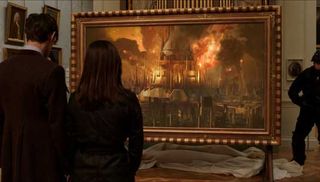
The episode was a huge success, and even the Milk team were taken aback by the response. "We had no idea it was going to be so big," Cohen marvels. "77 million people or more around the world, all at once, with the simulcast - that's like history.
"I knew it would be big in England, but watching Twitter go ablaze, with things like Russell Crowe and his kids watching it in a cinema in Sydney, really brought it home how big the show has become."
End of year one
Along with work on 47 Ronin and another series of Sherlock, Milk was up and running, and the team hasn't looked back since.
Prior to its first year the London-based team had worked on Ice Age Giants, Sinbad, Skins, Sherlock and Merlin on TV, and feature films including Snow White and the Huntsman, Les Miserables and Dredd 3D. Currently employing around 70 people, "with more on the way", work for both TV and cinema is flowing for their door. And as Cohen indicated earlier, Milk has no problem switching between the two.
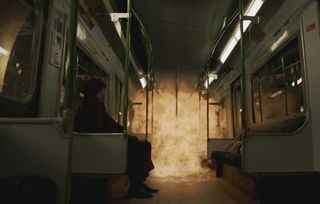
"We all use the same technical pipeline to put our work through," he explains. "Sometimes our TV files are bigger than our film files, if we're working in 4K for example. And so again we're seeing a coming into line of tools and files and formats and workflows. It's the same technical pipeline with the same people, invariably working on an episode of a TV show as on a massive shot in a movie."
The next doctor
All of which means bodes well for the forthcoming new series of Doctor Who this August, as Peter Capaldi takes over the lead role from Matt Smith.
"We're just delivering the first couple of episodes now," says Cohen. "And the stuff that I saw last week on episode one - which has been written by Stephen Moffat and directed by a very talented guy called Ben Wheatley - looks fantastic. So yeah, more excitement to be had later this year. Just the summer and the World Cup and then it'll be Doctor Who time again."
Win a trip to SIGGRAPH!
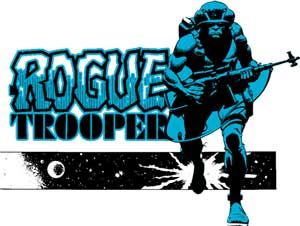
Masters of CG is a competition for EU residents that offers the one-in-a-lifetime chance to work with one of 2000AD's most iconic characters: Rogue Trooper.
We invite you to form a team (of up to four participants) and tackle as many of our four categories as you wish - Title Sequence, Main Shots, Film Poster or Idents. For full details of how to enter and to get your Competition Information Pack, head to the Masters of CG website now.
Enter the competition today!

Thank you for reading 5 articles this month* Join now for unlimited access
Enjoy your first month for just £1 / $1 / €1
*Read 5 free articles per month without a subscription

Join now for unlimited access
Try first month for just £1 / $1 / €1
Get the Creative Bloq Newsletter
Daily design news, reviews, how-tos and more, as picked by the editors.
Tom May is an award-winning journalist and editor specialising in design, photography and technology. Author of the Amazon #1 bestseller Great TED Talks: Creativity, published by Pavilion Books, Tom was previously editor of Professional Photography magazine, associate editor at Creative Bloq, and deputy editor at net magazine. Today, he is a regular contributor to Creative Bloq and its sister sites Digital Camera World, T3.com and Tech Radar. He also writes for Creative Boom and works on content marketing projects.
